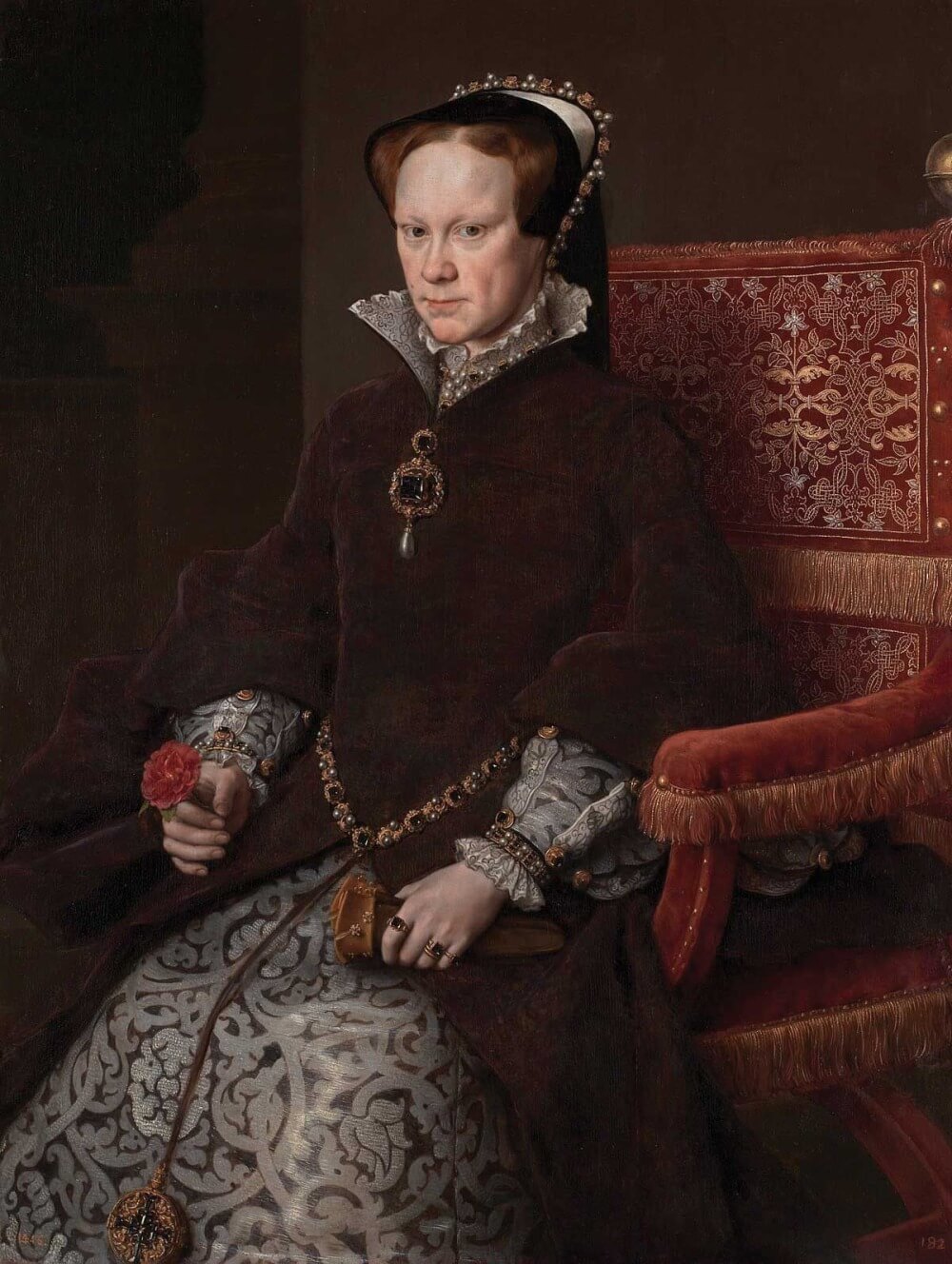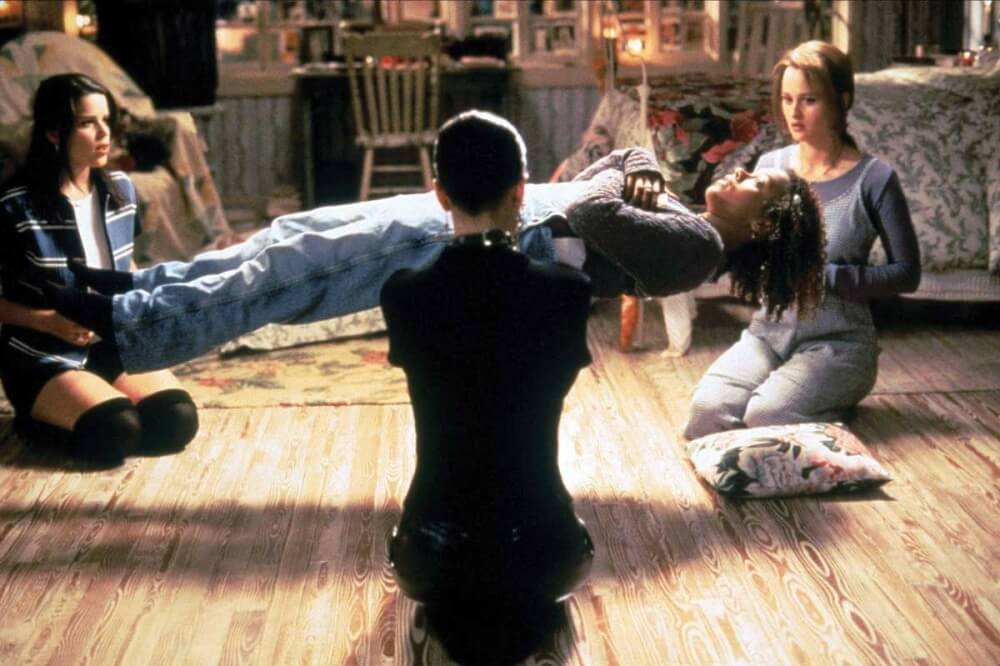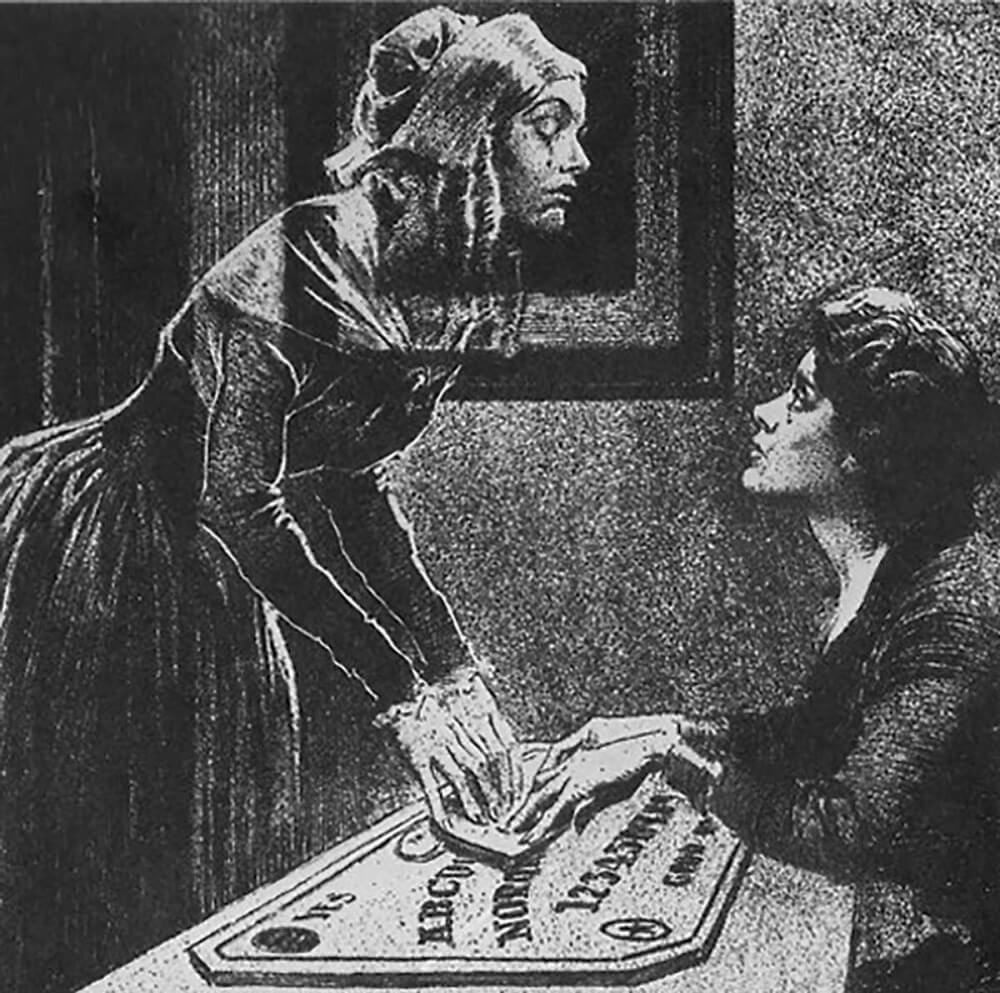Ever wonder where our most popular sleepover games come from? Check out the spooky (and scientific) origins of some of our faves.
Bloody Mary
The legend of the Bloody Mary game derives from three possible sources. One source is Queen Mary I of England, or “Blood Mary.” She got that moniker the hard-won way, ordering hundreds of Protestants burned at the stake. At first, she was only trying to scare them. You know…a little “look what happens to the neighbors when you don’t practice Catholicism” sort of lesson. But the bloodshed only made Protestants ornerier and more determined to practice their religion. Her half-sister, Elizabeth I, was later forced to clean up the mess and keep a tense peace.
 Mary Tudor, 1554; Antonis Mor, Public Domain, Via Wikimedia Commons
Mary Tudor, 1554; Antonis Mor, Public Domain, Via Wikimedia Commons
Another possible source is the equally tragic Mary, Queen of Scots—cousin of Elizabeth I. Mary was foolish enough to lay claim to the English crown while it was still sitting firmly on Elizabeth’s head. Mary’s second husband, her cousin Henry Stewart, along with Protestant nobles, stabbed Mary’s Catholic secretary 56 times. Mary was then allegedly involved in Stewart’s murder. After Mary was forced to abdicate her throne to her infant son after being abducted by her next husband, James Hepburn, who was a suspect in Stewart’s murder, she fled to seek sanctuary with Elizabeth I. Elizabeth then had her arrested rather than offer her sanctuary. Elizabeth imprisoned her for 18 years. Mary got bored, plotted to overthrow and assassinate Elizabeth, and was executed for treason.
The third source might be the most probable since it was, according to local legend, directly tied to witchcraft. In the 1860s, Mary Worth led a reverse underground railroad north of Chicago. Mary would lure unsuspecting runaway enslaved people to her home under false pretenses and then collect her bounty once she sent them back to enslavement in the South. Rumors abounded that Mary was practicing the dark arts, and worse—using herbal medicines, sacrificing animals, and torturing and killing enslaved people for rituals. The townsfolk eventually grew tired of her machinations and lynched her. Other accounts claim she was burned alive. However, there’s not a single newspaper record of a woman burned alive as a witch during this time, and that is the kind of story that makes the local paper. But whether she’s Bloody Mary, Mary Worth, Mary Whales, or someone else, the real reason for the appearance of her spooky apparition isn’t due to spirits, but science—the Troxler effect.
The Troxler effect is an optical illusion in which fixating on one portion of an image for an extended time causes it to fade or distort. The phenomenon happens because our brains have adapted to filter out unnecessary information. In one study, researchers tested the Troxler effect by having participants stare into a mirror in dim lighting for 10 minutes. About 66 percent of participants saw their faces deform, 28 percent saw an unknown person, and 48 percent saw monsters in the mirror.
Those results would make any self-conscious teen think twice before taking another bathroom selfie.
Light as a Feather, Stiff as a Board
This game begins with the cheery exercise of choosing someone to die. The chosen corpse lies on the floor, prone, encircled by each of her friends. Each girl then puts two fingers under the supposed dead girl and tries to lift her with only delicate fingers. Chanting helps. The one I remember goes like this:
“She’s looking pale.
She’s looking worse.
She’s dying.
She’s dead.
Light as a feather, stiff as a board.”
It’s a pretty morose game. Unsurprisingly, it has an equally dark past. In 1665, diarist Samuel Pepys witnessed the ritual enacted during a plague outbreak. He described one instance where four little girls each placed one finger under a boy pretending to be dead. The girls each whispered into each other’s ears and then levitated the boy with each of their four tiny fingers.
 Still from The Craft depicting the game Light as a Feather, Stiff as a Board, 1996; Maximum Film/Alam
Still from The Craft depicting the game Light as a Feather, Stiff as a Board, 1996; Maximum Film/Alam
Of course, Pepys believed it was a parlor trick, but the real magic was in physics. If the person playing dead stayed still enough, their body weight would be evenly distributed between the people lifting. For example, with an 80-pound boy, the girls would only have to lift 20 pounds with each of their fingers—close to the weight of most childrens’ backpacks today.
Although young girls are not exactly known for their grip strength, fingers are stronger than they appear. Steve Keeler (U.K.) holds the world record for lifting with one finger—129.50 kg (285.49 lb). And strongman Louis Cyr could lift 500 pounds with one finger.
Physics aside, the game must have also assuaged fears during plague outbreaks. Although we have few records of how children responded to plague deaths, we can imagine that making a pretend dead person levitate off the ground must have felt empowering during such a powerless period. And who needs drugs or alcohol when you can levitate your friends?
Ouija Board
Communing with the dead didn’t die with spiritualism’s raps and knocking. It just took on a more utilitarian spin. No one wanted to sit around a table waiting for spirits to knock out a Morse code message. Even 19th-century people had better things to do. Seeing an untapped market for convening with the dead quicker, Charles Kennard started the Kennard Novelty Company with investor Elijah Bond, a local attorney, Col. Washington Bowie, and medium Helen Peters. Unfortunately, the crew ran into some snafus when trying to patent their new “talking board” invention.
Now, we have all been to that sleepover where everyone accuses the other person of moving the planchette—the pointer thingy that picks the letters. Well, Kennard had the same problem. To prove that the Ouija board worked, he had to demo it to the chief patent officer.
Legend has it that no one knew the chief patent officer’s name but the helpful spirit who spelled it out. And that was proof enough that their “toy or game” was the real deal.
On February 10, 1891, the Kennard Novelty Company was awarded a patent for the first Ouija board.
 Vintage illustration depicting Ouija board players
Vintage illustration depicting Ouija board players
For another century, the Ouija board was good, old-fashioned fun for the whole family. It provided comfort to those who had lost loved ones and a way for bored teens to turn
ghosts into pen pals. All that changed in 1973, however, with the movie release that would give teens nightmares during sleepovers for generations—The Exorcist.
In this movie, a young girl named Regan becomes possessed by a demon after innocently playing with her Ouija board. A lot of levitating and head spinning follows. Suddenly, this child’s toy was not so childish. The devil had come to collect and turn America’s toy into a talisman of evil.
Today, Ouija boards continue to terrify us because they work. But it’s not spirits making the planchette move. It’s the ideomotor effect—our unconscious, involuntary physical movements. When you ask the board questions, your hand moves the planchette to spell out the answers in words, numbers, yes, or no. (Or, if you have a grumpy spirit,
“goodbye.”) Your brain isn’t aware of these movements. In other words, when we think about an action, our hand follows that action.
These involuntary movements make the Ouija board work best for kids. When a subject believes the planchette is moving by itself, it is more moveable. Consequently, as the board begins to spell out the first letters of a word, our minds fill in the rest, and the hand follows. Our subconscious often gives the answer we most hope for or fear.
In essence, the Ouija board predicts our anxiety levels. And those levels are often high at your typical sleepover. But aside from anxiety levels, Ouija also taps into a part of our brains we often ignore—our intuition. In one study, blindfolded participants were asked trivia questions. In one round, they answered questions without help from their spirit guides. In the next round, the participants used Ouija to answer the questions. During the study, the blindfolded participants believed their teammate was moving the planchette with them when they were moving it themselves. The researchers found the participants got more questions right when using the Ouija board than when not.
So, when sleepless girls across America huddled around Ouija boards asking questions about their futures, the Ouija probably gave them better answers than their friends ever could. Or perhaps the board game gave them the answers friends could not speak out loud.
Top photo: Dialog Center Images, CC BY 2.0, via Wikimedia Commons


